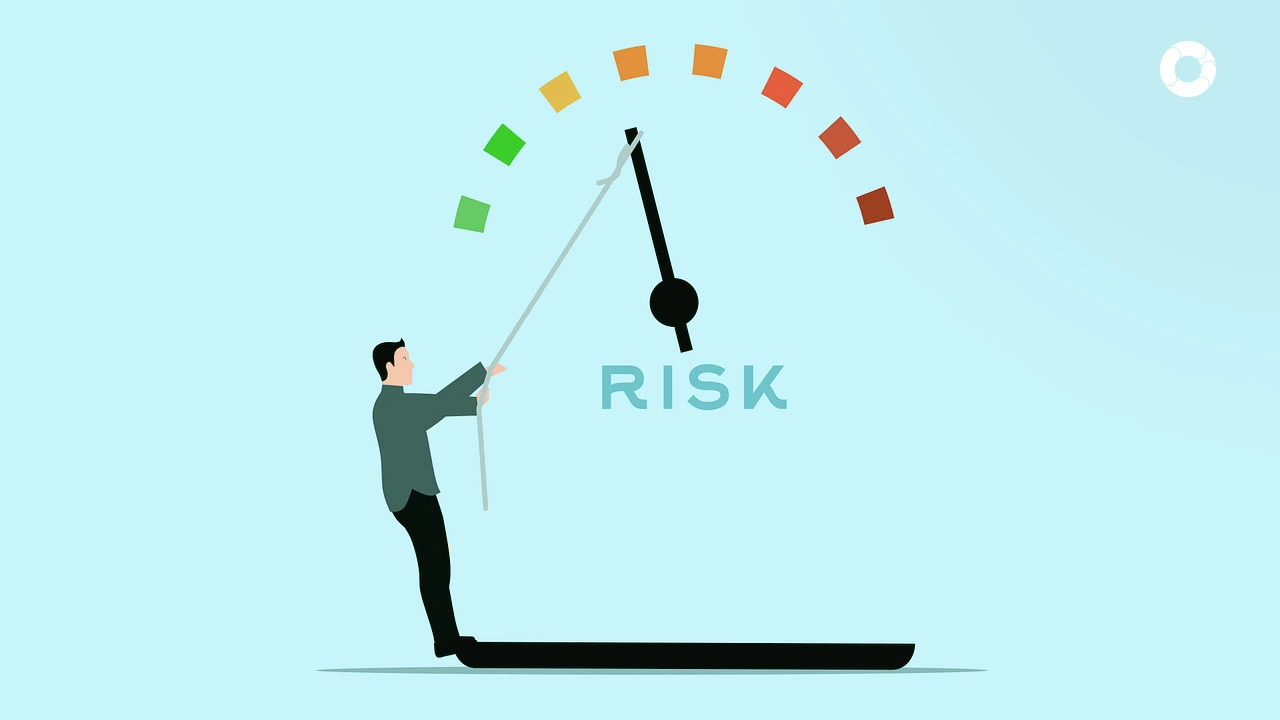Heat map: a tool to optimize risk management

In a globalized world in which instability implies more and more uncertainty and with this greater probability of risks for organizations, a useful tool to manage and control risks adequately is the heat map.
The challenge is to minimize the impact and mitigate the damage associated with all types of risks: operational, reputational and strategic. For this mission, the heat map, also known as risk map, is key to have a clear visual of what are the specific risks faced by the organization.
In this article you will learn what this tool is about and how it can contribute to the optimization of your organization's integrated risk management system.
What is a heat map?
According to SearchDataCenter, a risk heat map consists of a matrix with two axes, where the Y-axis represents the probability of risk frequency and the X-axis represents the impact the risk may have.
The map is represented graphically by placing the risks in a quadrant, depending on the probability that a certain risk may occur and the quantitative or qualitative impact that occurs if the risk materializes:

The above example shows a risk map in which you have:
- Storm damage (operational risk).
- Cyber-attack and information theft (operational risk).
- Negative comments on social networks (reputational risk).
- Significant number of customers switching to competitors (strategic risk).
The identified risks must be evaluated, estimating how often they could appear and what is the estimated financial, reputational and strategic impact.
With Pirani you can create in a few steps the risk matrix of your organization, defining the probability and impact scales and you will be able to visualize both inherent and residual risks in the heat map and make timely decisions based on this.
How to Optimize Risk Management with a Risk Matrix?
Effective risk management is essential for any organization's success. One powerful tool that aids in this process is the risk matrix, also known as the heat map. This tool facilitates decision-making by visually representing the most significant risks associated with each objective in the strategic planning processes. By leveraging the risk matrix, organizations can optimize their integrated risk management (IRM) systems, prioritize actions, and allocate resources more effectively.
The Role of the Risk Matrix in Risk Management
A risk matrix helps organizations identify, assess, and prioritize risks based on their probability and impact. By plotting risks on a heat map, stakeholders can quickly see which risks require immediate attention and which are less critical. This visual representation simplifies the complex task of risk management, making it easier for decision-makers to understand and act upon the information.
Optimizing Integrated Risk Management (IRM)
To optimize IRM using a risk matrix, organizations need to focus on several key areas:
-
Prioritization of Actions: The risk matrix allows organizations to prioritize actions based on risk classification. By identifying which risks have the highest probability and impact, organizations can allocate resources more effectively, ensuring that the most critical risks are addressed first.
-
Resource Allocation: Compliance managers and risk analysts can use the risk matrix to manage resources efficiently. By focusing time, money, and personnel on the most harmful risks, organizations can enhance their overall risk management strategy. This targeted approach ensures that resources are not wasted on low-impact risks.
-
Enhanced Communication: For the risk matrix to be truly effective, it must be disseminated throughout the organization. This promotes dialogue between departments and creates collective awareness of risk priorities. When all areas of the organization understand their role in risk prevention, the overall risk management culture is strengthened.
-
Building a Risk-Oriented Culture: Creating a culture focused on mitigating risks is essential for optimizing IRM. The risk matrix can serve as a key tool in this effort by helping each department understand its role in risk prevention and the interrelationships between different types of risks. For example, a high-impact risk in an operational area could significantly affect a strategic business unit, highlighting the need for coordinated risk management efforts.
Practical Application of the Risk Matrix
According to EALDE Business School, a risk matrix includes decisions made by the company in response to identified risks. These decisions can be categorized as accepting, reducing, or transferring the risk based on its probability and impact. Here’s how organizations can apply the risk matrix practically:
-
Acceptance: Some risks may be deemed acceptable due to their low probability and impact. In such cases, the organization might decide to accept the risk without taking further action.
-
Reduction: For risks that have a high probability or impact, mitigation strategies must be developed. This could involve implementing new policies, procedures, or technologies to reduce the likelihood or consequences of the risk.
-
Transfer: Certain risks can be transferred to third parties, such as through insurance or outsourcing. This approach is particularly useful for risks that are beyond the organization’s control but can be managed by external entities.
Maximizing the Benefits of the Risk Matrix
To fully capitalize on the benefits of the risk matrix, organizations should:
-
Regularly Update the Matrix: Risk environments are dynamic, and new risks can emerge over time. Regular updates to the risk matrix ensure that it remains relevant and effective in guiding decision-making.
-
Engage All Stakeholders: Involving all relevant stakeholders in the risk assessment process helps to gather diverse perspectives and ensure comprehensive risk identification and analysis.
-
Integrate with Strategic Planning: The risk matrix should be integrated into the organization’s strategic planning processes. This ensures that risk management is aligned with organizational goals and objectives.
The risk matrix is an invaluable tool for optimizing risk management within organizations. By prioritizing actions, efficiently allocating resources, enhancing communication, and building a risk-oriented culture, organizations can significantly improve their integrated risk management systems. Understanding and utilizing the risk matrix allows organizations to make informed decisions, mitigate risks effectively, and ensure long-term success in achieving their objectives. By focusing on practical examples of ESG risks, companies can better navigate the complexities of today’s business environment and maintain a competitive edge.
This tool guarantees its functionality when constantly updated and re-evaluated since the environment is extremely changeable and the way to manage risk also evolves.
You May Also Like
These Related Stories

How to make a risk matrix for your company

Step-by-Step Guide: How to Create a Risk Matrix

Main types of risk that can affect a company

9 Essential Risk Management Strategies for Business Success

Operational Risk Management: Strategies and Examples



No Comments Yet
Let us know what you think